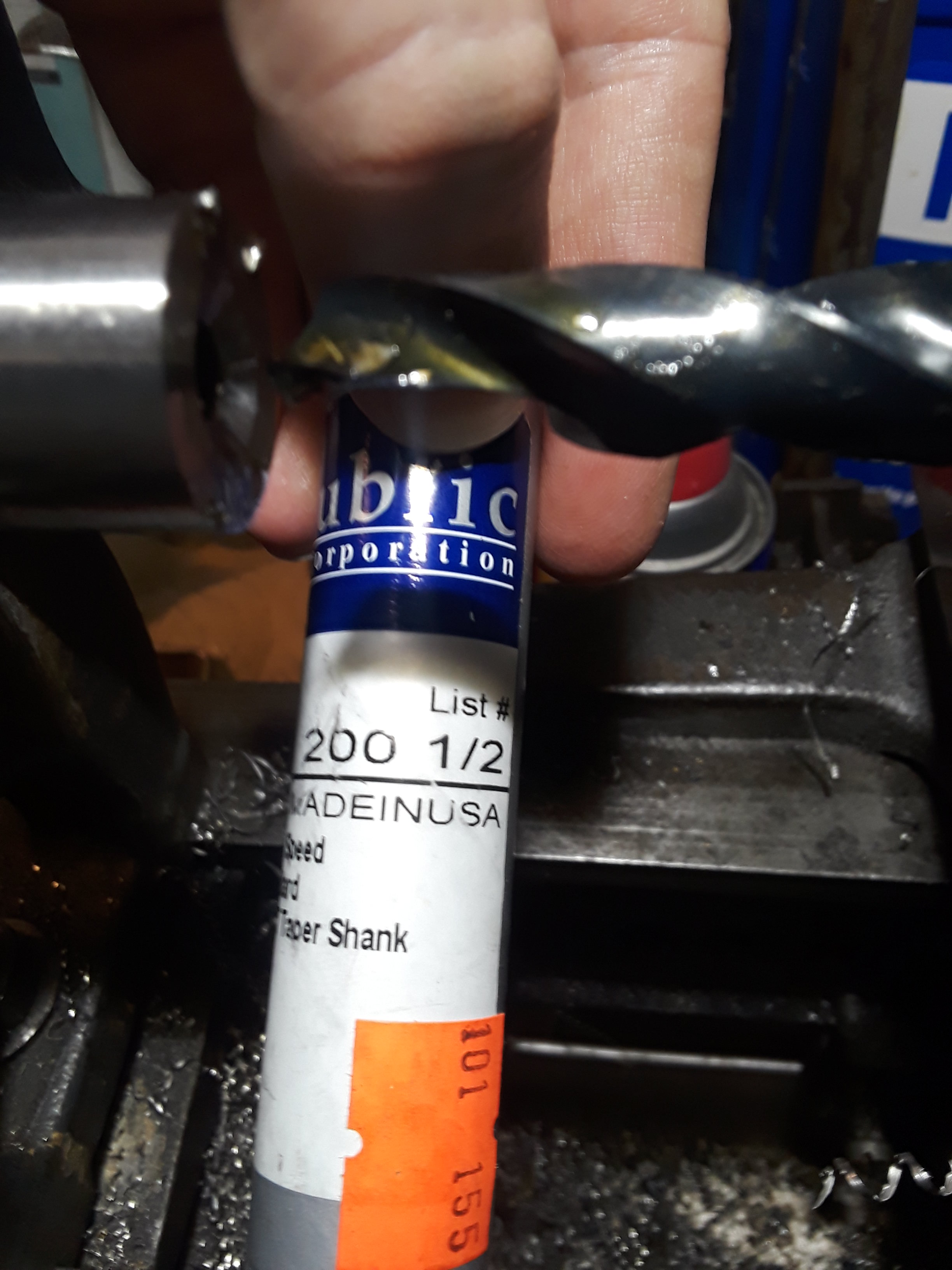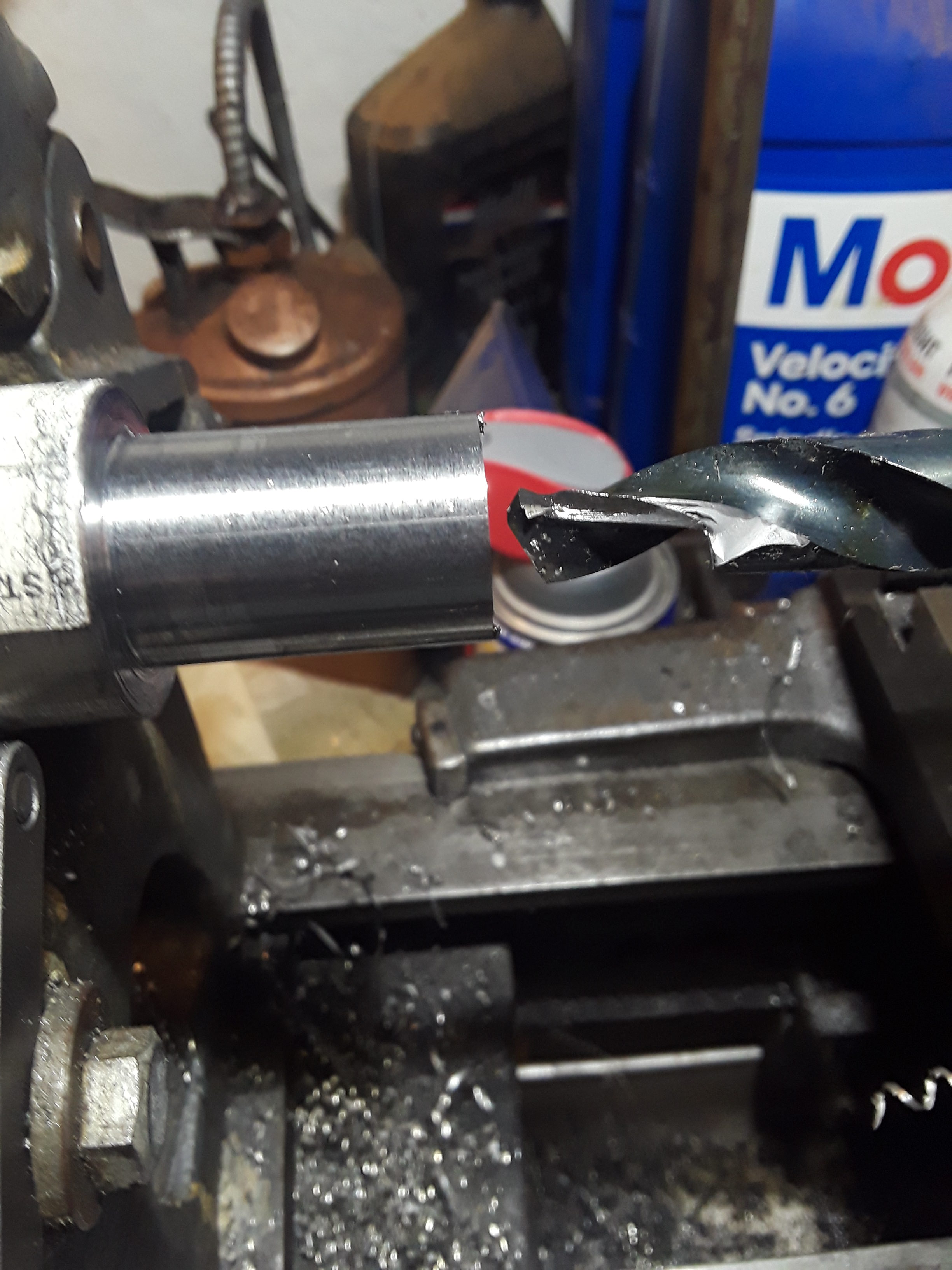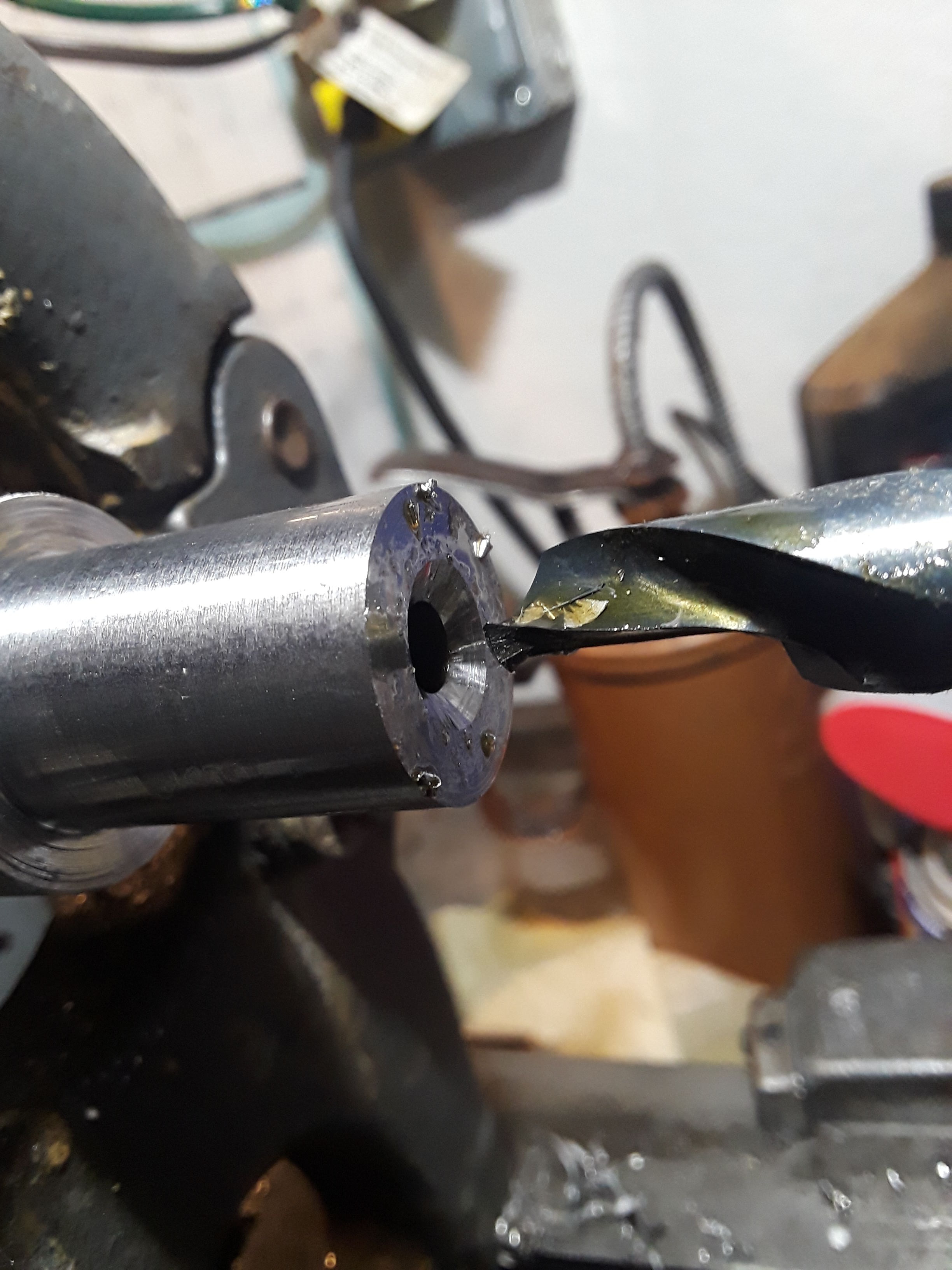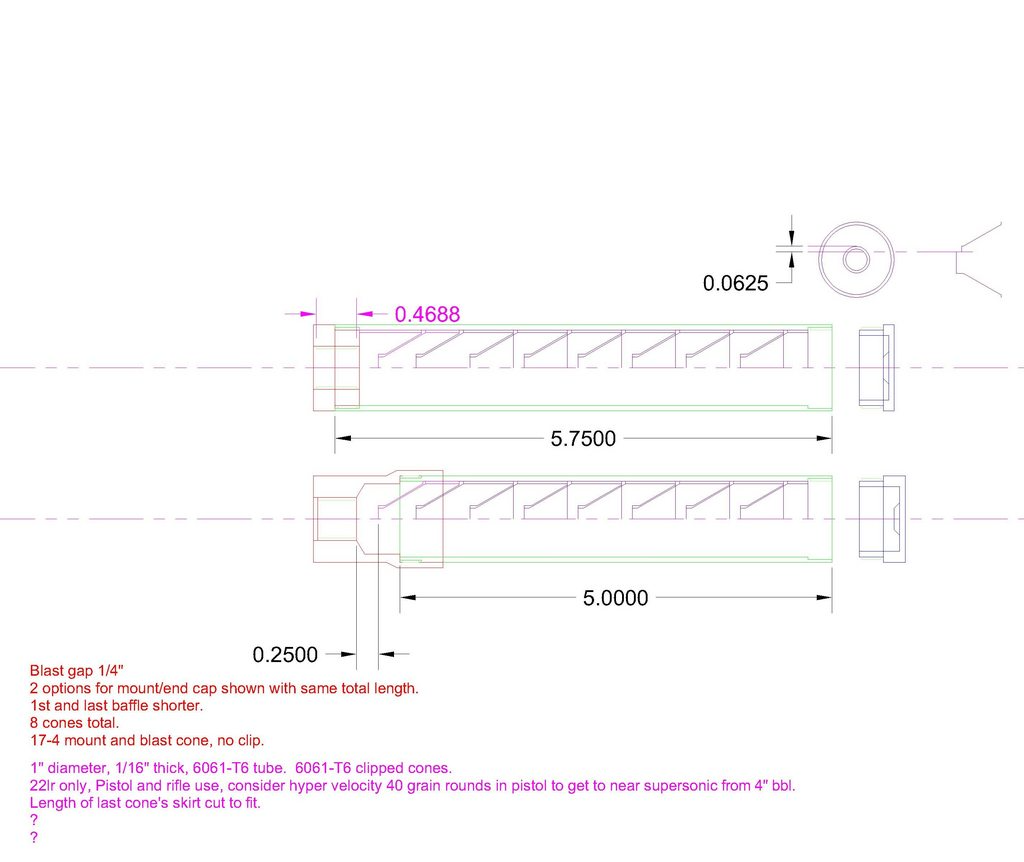- Joined
- Apr 12, 2013
- Messages
- 562
It isn't really a pilot. The 1/4" hole is required, I was using the drill to hog out before final boring to ID. It is a cone baffle for a suppressor. I guess I could have drilled the large hole and gone back to a 1/4" but I was concerned with concentricity. I took out an 11/16" bit and finished the operation, no problems.
Attaching pics was failing so I put in links...I think I got it now. Drawings included for part reference...slightly modified now but you get the idea from the pics.




Attaching pics was failing so I put in links...I think I got it now. Drawings included for part reference...slightly modified now but you get the idea from the pics.





